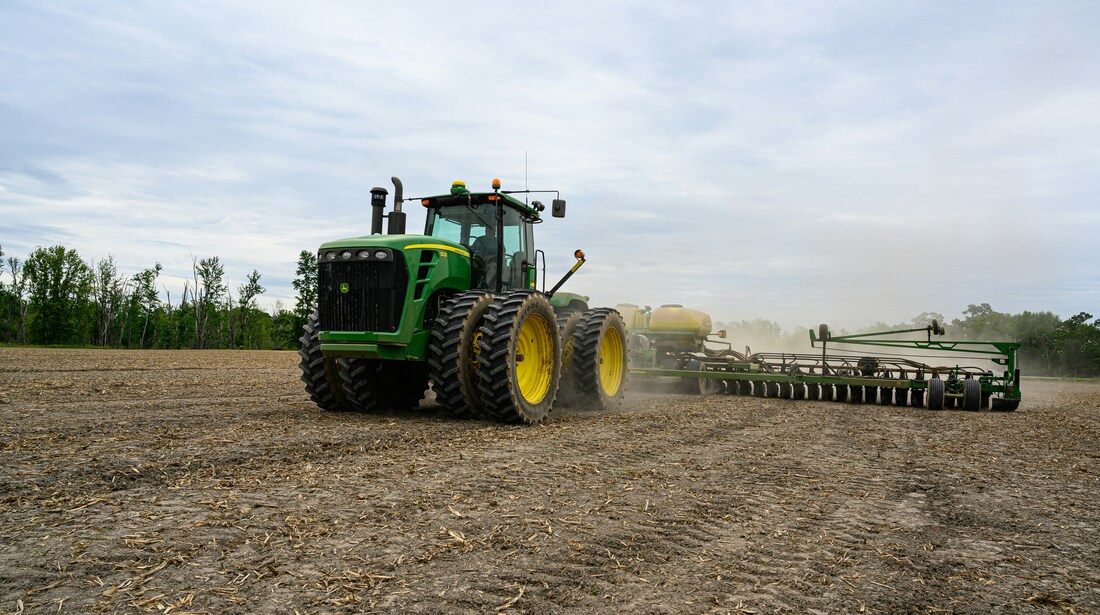On Jan. 2, Stine Seed Farm manager Steve Luther talked through takeaways from 2023 and how growers can plan ahead for the 2024 season on the Stine Seedcast. He discussed why developing a plan for the upcoming planting season is of the utmost importance to ensure crops have what they need to yield success come harvest. Here are Steve’s top four recommendations to incorporate into your plan to secure a smooth planting and growing season.

1. Weed control.
While weeds may have not been a problem for some last year, with the drought-like conditions that plagued much of the country during the 2023 season, suppressing weeds that overwintered in the soil will be of top importance this growing season.
“The big thing for us and the Midwest, and I hear it time and time again, is how we’re going to deal with suppressing weeds,” says Luther. “They’re out there; I don’t think it’s any secret. It’s probably because it was hot and dry and a lot of the herbicides that we use in today’s age are very water soluble, so it takes a lot of rain to keep those activated in the soil.”
Many of the best post-emergent and pre-emergent herbicides on the market require rainfall to activate and move the herbicide within the soil profile. Unfortunately, 2023 was a dry year for many, so their in-season or post herbicide program last year may not be viable as a weed control method this season.
Luther suggests being proactive and planning ahead to modify and strengthen both soybean and corn preprograms to ensure your post program works as it should. “You don’t want to have rescue trips with your sprayer,” he adds. Talk to your local Stine agronomist or sales rep or crop protection specialist about an integrated weed management approach for 2024.
2. Nutrient program.
Before hitting the field, growers should test their soil for nutrient shortages. The big three — nitrogen, phosphorus and potassium — are critical for plant production, but there are other inputs that should not go overlooked.
“Harry and I have always agreed, you’ve got to feed the crop. You can’t just put something on in the fall with your anhydrous and hope that’s going to be good enough,” says Luther. “This is even more important when you increase corn populations.”
Sulfur should be a foundational component of your nutrient program. The role of sulfur in corn plants is important to chlorophyll production and photosynthesis, which helps convert sunlight into energy and supports the plant’s nutrient uptake. Deficiency of sulfur can greatly impact the growth process and yield outcome of your crop.
To apply sulfur to plants, Luther recommends including it as part of your pre-plant and side-dressing program. “If you put pencil to paper, it’s one that returns.”
3. Fungicides and insecticides.
Fungicides and insecticides are not just “insurance” in an unpredictable year; Luther says they should become a yearly practice. “There are affordable options that work really well out there,” he notes. Luther suggests taking a split-shot approach, applying fungicide as part of the post-program and then following it up over the top adding an insecticide to the pass.
4. Hybrid/variety selection.
Stine has spent decades improving and expanding our genetic material to ensure growers have options. Luther does just that on the Stine Seed Farm, where he leads efforts to ensure our products perform and even exceed when paired with the right environment and best agronomic practices. Stine agronomists and sales reps are properly trained and well versed in how available products fit in their region. Setting up time to talk to our experts to place the right products on the right fields is a critical step to guaranteeing yield success in 2024.
Listen to Steve’s episode of the Stine Seedcast on your favorite podcast platform for more tips for the 2024 season and to learn about the evolution of the Stine Seed Farm.
Related Articles
-

Use Stine’s XP® seed treatments to prevent early injury to your crops
December 2025 in Agronomy
-

Understanding Stine’s enhanced oil profile soybeans
December 2025 in Agronomy
-

Soil sampling sets the stage for spring
November 2025 in Agronomy
-

Corn production growth paves way for more high-performing Stine® hybrids
November 2025 in Agronomy



